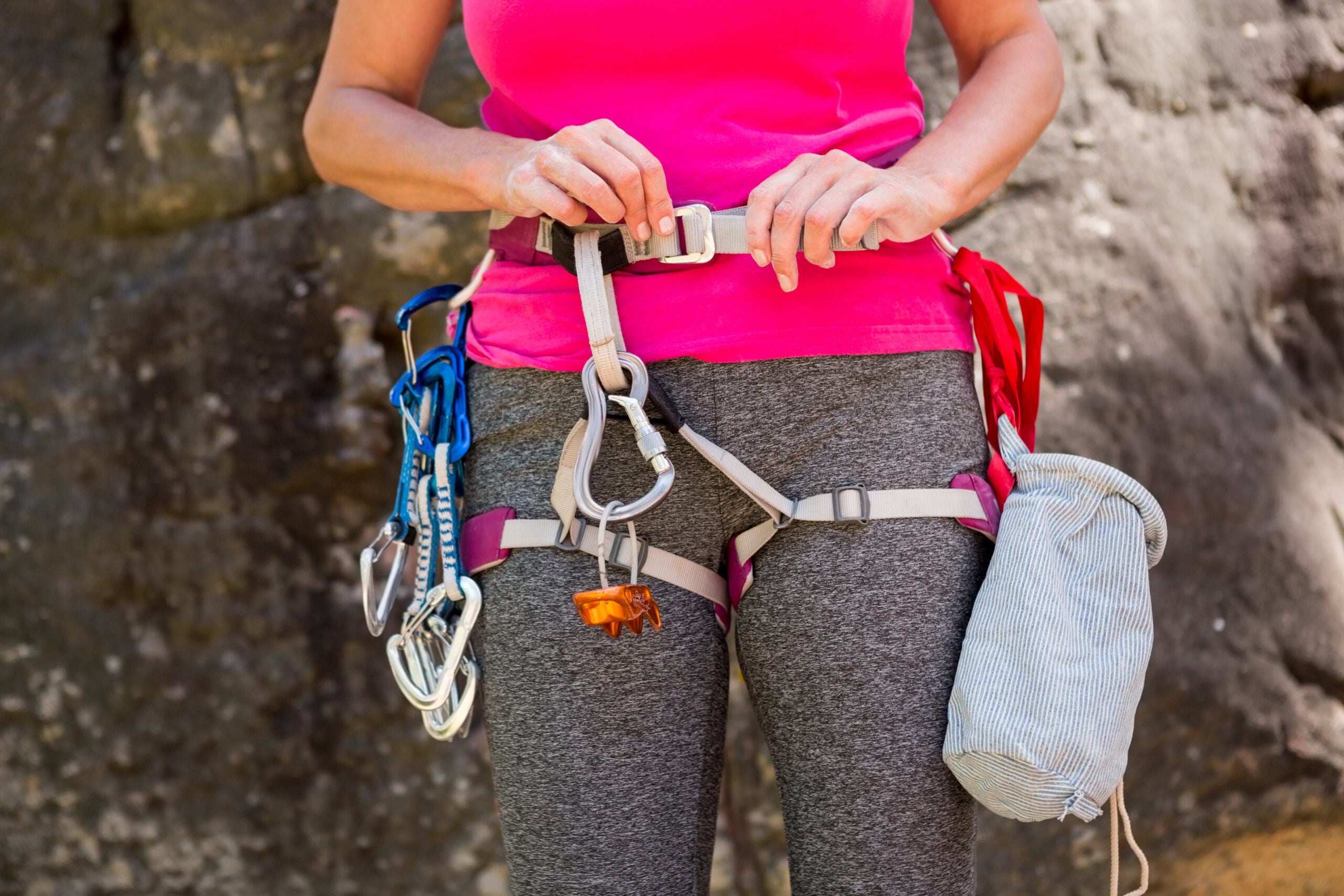Gear Loop Belay, and other Egregious Mistakes

Close up climbing equipment on a woman (Photo: Getty Images)
>>I was out at the crag and saw a guy next to us belaying a leader off of his gear loop. Worried, I ran over yelling, “Whoa! Whoa! Whoa!” The belayer turned to me with a lot of attitude and yelled, “What?” I told him to check his belay. He looked down, checked the gate, and said it was fine in a very mind-your-own-business tone. The leader clipped in direct to a bolt, started yelling at the belayer, and an argument ensued.
—Submitted by Randall Chapman
LESSON: We covered gear loops in this column quite recently, but the short of it is that most of them aren’t designed to bear loads. When you catch a lead fall, the force is transferred into the belayers body via their harness, so it’s nice to belay from the strongest section: the belay loop. Instead, let’s talk about advice. It’s easy to get riled up when you see something unsafe, but the last thing you want is for the culprit to feel like he’s in a confrontation. If he gets defensive, he’s not going to listen to you. The best way to go about this is to calmly approach him, and offer your advice in a friendly, helpful tone. Something along the lines of, “Hey, you might want to try ______. I noticed you were doing ______, but actually in some situations that can lead to ______.” If it’s not an urgent error, wait until the climber is back on the ground first. Hopefully, they’ll appreciate the tip. If not, the climber can take it up with the belayer himself, like above.
>>I saw a girl belaying in a rock gym with a Grigri. She was faced away from her partner, talking to a friend, with her hand over the locking feature on her Grigri. Her partner decked from 20 feet. They both walked away, but neither had any idea what went wrong.
—Submitted by Rob Aspinwall
LESSON: There are two problems here, and both are common. First, the Grigri is not an auto-locking device, it’s an assisted braking device. Most of the time, the device’s built-in cam will stop a fall on its own, but there are situations when it might not (skinny ropes, light climbers, significant rope drag). Bottom line: Keep your hand on the brake strand. Also, gripping the device can lock it in the open position, negating its braking capabilities. That’s what happened here. Check out Grigri basics for more tips. The other major problem above is the inattentive belayer. When you’re belaying, your full attention should be on your climber. It’s not the time to socialize. You never know when you’re going to need to feed out slack, reel it in, or catch a fall. Had the belayer here been watching, she may have had time to lock off the rope before the climber decked.
See something unsafe? Email your story to dmiller@outsideinc.com and we’ll share it with the community and make us all safer climbers.